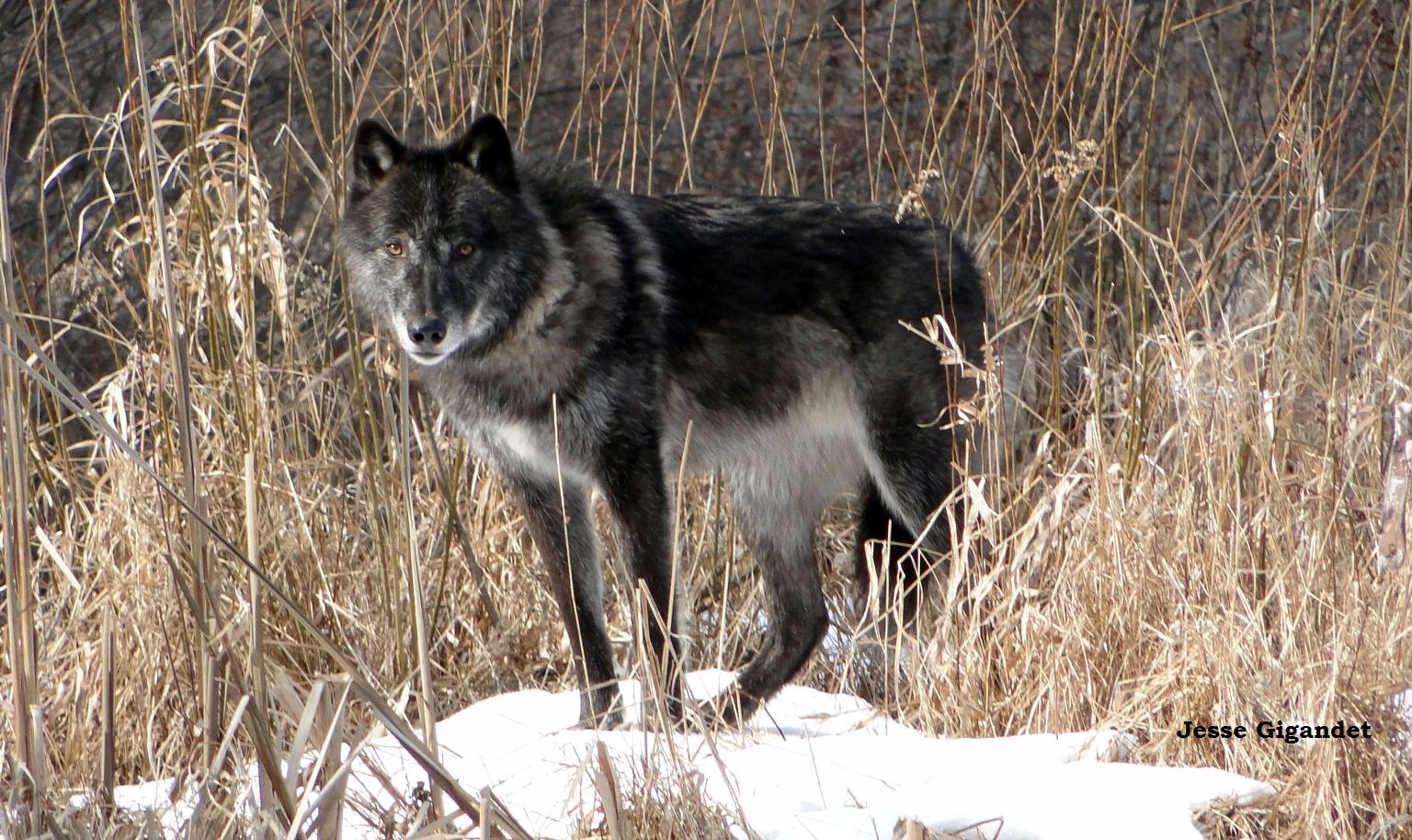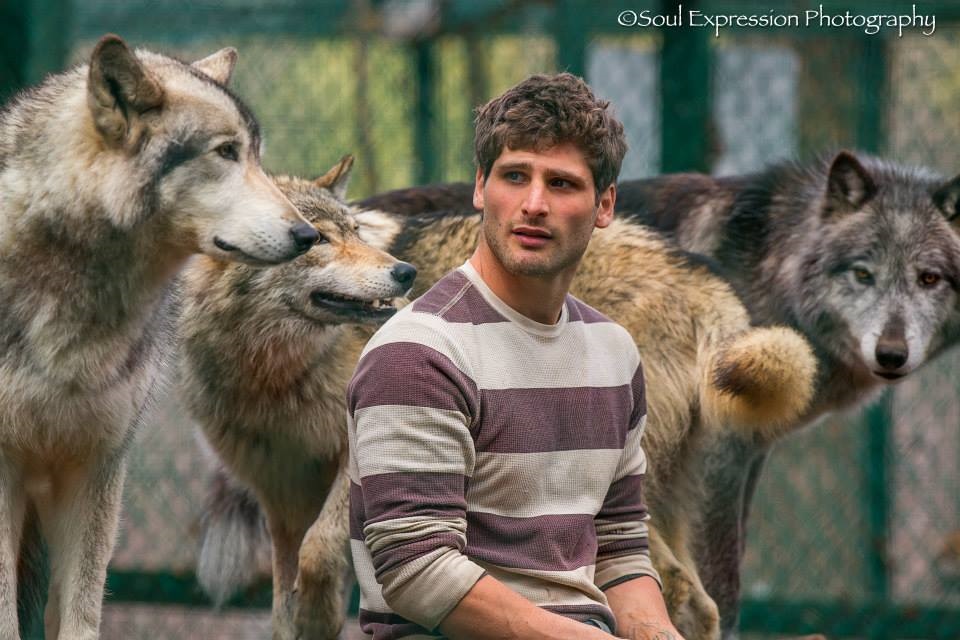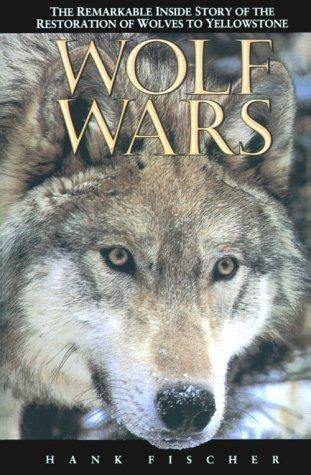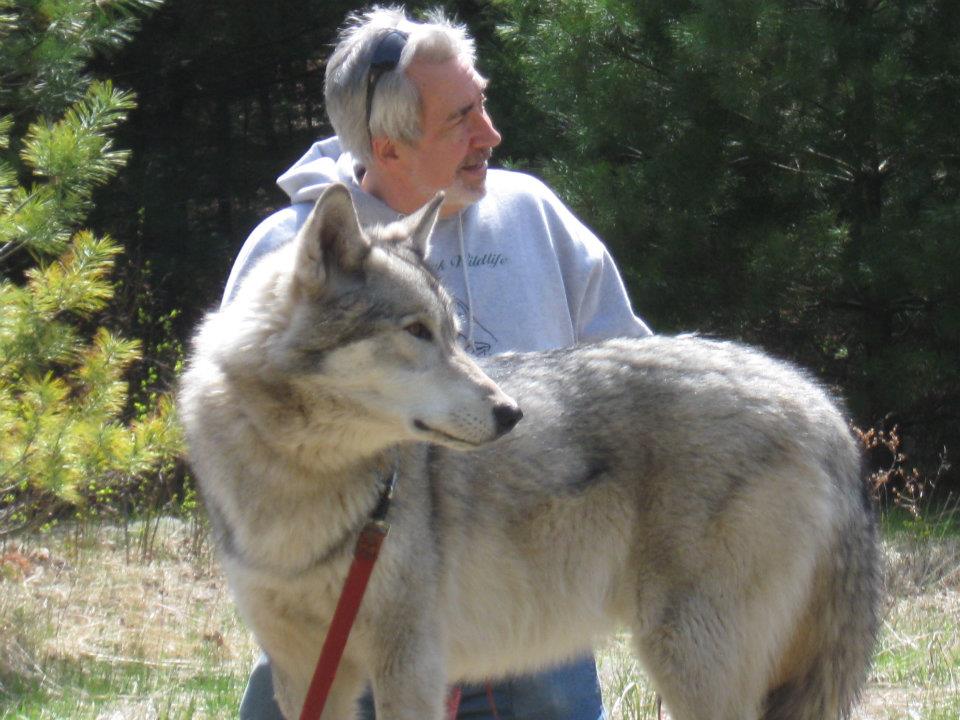






Zeebie by Jesse Gigandet

|
What
is the "Wolf Gathering" at the Adirondack Wildlife Refuge?
Formerly called the "Wolf
Walk"
Would you like to learn all about wolves, and their roles in nature? Every day at around 10 am, except Tuesdays and Wednesdays when the Refuge is closed, Steve and Alex enter the half acre wolf enclosure, and visitors watch as one of us interacts with the wolves, while the other delivers an entertaining and educational narrative, which sheds light on many aspects of wolves lives: Why are wolves called "keystone predators", and how do they control wild mammals like beaver, deer, moose, elk and caribou? Are wolves ruthless killers as they are sometimes portrayed in Hollywood movies, or are they a family-oriented predator, whose tendency is to remove the very old, very young, the sick, and the lame from their target species? Do wolves damage the species they hunt, or strengthen them, by eliminating animals who may breed weakness and vulnerability into the species, as wolves try to earn a living, in that beautiful, but difficult and unforgiving environment we call Nature? How do wolves patrol and defend their territories, and what exactly is a wolf "pack"? Where do dogs come from, why do they display the behavior that they do, and why did we end up with dogs as "man's best friend"? What kind of wolves live in the Adirondacks? Are wolves dangerous to people, and how did the return of wolves to Yellowstone affect the Park's ecosystem, as well as Yellowstone tourism? The Wolf Gathering lasts
about an hour and a half, and is fairly detailed, but if you are interested
in wolves, or want to photograph a wolf up close, without leashes or collars,
or just want to enjoy a casual walk along the beautiful Wolf Walk trail,
which will take you to enclosures for bobcats and lynx, fox, bald eagles
and other Adirondack birds of prey, you'll enjoy the "Wolf Gathering". We
used to have visitors call ahead and register for what we then called the
"Wolf Walk", but with the wolves in their new large enclosure, we can accomodate
many more visitors, and everyone gets the same clear field of vision, standing
outside the enclosure, watching the wolves eat, play and run around, and
making photography much more rewarding. There is no set fee for
admission to the Refuge, but keeping in mind that the Refuge is a nonprofit,
which is supported mainly by visitors donations, most visitors, if they find
the experience enriching and educational, make some kind of donation, typically
$20 to $50. If you have questions
call us at 855-Wolf-Man (855-965-3626) or 914-772-5983. Both
numbers hit Steve's cell, but try not to call between 10 and 11:30
am, as I'll be with the wolves and unable to take your call. Steve Hall |



Come meet Kiska, Great Plains Wolf Pup, at the Adirondack Wildlife Refuge!

Kiska by Terry Hawthorne
| The Wolf De-Listing Debate: What They Will
Not Tell You! Steve Hall |
Cree, by Bill Woodall
|
Wolves as Keystone
predators Few animals
have been as romanticized and vilified as wolves have, but after five decades
of collecting data and studying wolves in the wilds of Isle Royale National
Park in Lake Superior, researchers Durward Allen, Rolf Peterson, L. David
Mech, John Vucetich and their teams, have greatly enriched our understanding
of wolves. Isle Royale is a 200 square mile island in Lake Superior, about
15 miles from the international shore-line boundary where Minnesota meets
Ontario. Moose swam to Isle Royale about 100 years ago, and wolves wandered
across the ice from the mainland about 50 years later, during a bitterly
cold Winter. Warming climate has made it unlikely that more wolves will be
crossing over any time soon, so Isle Royale sits out in Superior as a perfect
natural laboratory, enabling the longest continuous study of predator-prey
relationships in the history of modern science. The core
of a wolf pack consists of the breeding male and female, who generally turn
out to be “Mom” and “Dad”, and the pups of the year, who, following the mating
in February, are born about 60 days later, towards the end of April or in
early May. The other members of the pack are usually older siblings from
the two previous years, which are physically mature in terms of size by the
time they are 8 or 9 months old, but not sexually mature until sometime between
their second and third year. Throw in the occasional outsider absorbed or
dispersed from another pack, and you have a wolf pack, curiously similar
in structure to a human family. Older siblings,
along with Mom and Dad, protect the pups of the year, and offspring can obtain
food by approaching, and nuzzling or licking the muzzle of any grown wolf,
which then regurgitates undigested food. Pups begin exploring and wandering
from the den after 4 weeks, and, as use of the den lessens, and the pups
begin weaning, they are led to kill sites to feed and begin learning the
ways of adults. This happens at about 4 months of age, and these "rendevous
sites" become the gathering spots for the family. At sexual
maturity, wolves disperse from their packs, seeking to fill a position in
another pack, or find an area where the pressure from resident, territory
defending packs is diminished, and where they may start their own pack with
a dispersing or wandering member of the opposite sex. This leads some young
wolves to disperse up to 600 miles away from their natal pack, and explains
how wolves spill over into adjoining areas, such as Minnesota wolves spreading
to Wisconsin and the upper peninsula of Michigan. Now
and then, the over-abundance of prey animals will result in larger packs,
where more than one pair of wolves is mating. Loyalty
within the wolf pack is strong, and while you may observe much dominant posturing,
snarling and growling by Cree, the gray male, born in 2006, in the role of
older brother, and correspondingly submissive behavior by Zeebie, the younger
black male, born in 2009, there is no actual violence. Look for Cree to carry
himself upright, with his tail slightly cocked and raised in these encounters,
and for Zeebie to approach Cree with a lowered posture, with tail down or
tucked, while attempting to lick Cree’s muzzle in a sign of deference. The starvation
factor is most difficult for us to appreciate, as we live in a culture that
provide safety nets, such as medical care, life insurance, unemployment,
welfare, savings accounts, etc. In other words, whether I'm a great
provider, or merely an adequate provider, I am protected against the strains
of periods when I am less able to provide for my family. While some predators,
like foxes and goshawks may cache food, generally speaking, if you're a wolf
or other predator, and you follow 8 months of successful hunting with several
months of poor hunting, you and your family will likely starve. By definition
then, any predator that so much as survives through a given year, is not
only a good hunter, but a great hunter, or being supported by a great hunter. Diseases
like parvo virus and distemper take their toll, as do parasitic critters
like the mite that causes mange. With respect to wolves from one pack killing
trespassers from other packs, or transient wolves passing through a territory
at the wrong place and time, breeders may kill 3 or 4 wolves from other packs
during their lifetime. Because of frequent turnover in the pack, there are
times when an outsider may enter the territory at the right time, and become
incorporated into the pack. Wolves also eliminate competition, by killing
smaller predators, such as coyotes and foxes, when they encounter them, which
enables a larger number of smaller prey animals for the wolves to take. Incidentally,
something to ponder when considering the proposed reintroduction of wolves to the Adirondack Park: as of 2010, there are
an estimated 800 moose within the Park's 9,400 square miles, compared with
500 moose within Isle Royale's 200 square miles. And while moose numbers
seem to be increasing at an accelerated clip, there are, on the other hand,
probably 80,000 white-tailed deer within the park. Wolves are keystone predators,
who alter the ecosystems in which they live. When wolves were introduced
out west, into Yellowstone Park, Idaho and Montana, they may have eliminated
half the western coyote population, and a good percentage of an increasing
beaver population, within their territories. Gray wolves kill mesopredators
(like coyotes) to eliminate competition for smaller game. But according to
DNA studies, the eastern coyote is part wolf, thus accounting for its enhanced size, but the wolf component is mainly
eastern wolf, like those found in Algonquin Park, and closely related to
the red wolf, which is being reintroduced into the Carolinas with mixed success.
This is because the red wolves are interbreeding with local coyotes. While there
is very limited livestock within the Adirondack Park itself, there are livestock
farms outside the Park, and the spreading of wolves through dispersal would
probably necessitate the control of wolves through hunting, an idea unpopular
with many pro-wolf groups, who would prefer no wolves to a recovering wolf
population subjected to hunting. Compromise may be a prerequisite to any
wolf reeintroduction. David Mech has a 2006 paper, Wolf
Restoration to the Adirondacks, and there's a ten year old study on wolf
restoration from the Conservation Biology Institute at wolf-reintroduction-feasibility-in-the-adirondack.
Wolf packs
defend territories ranging in size from 20 square miles to 2000 square miles,
depending on the amount of prey of varying sizes available within their territory,
the number of wolves in the pack, and the pressure of adjoining packs defending
their territories. Howling is an important means of communication among wolves,
both within the pack, for example, to identify location viz a viz another
pack member, or as a pack bonding activity, and between neighboring packs,
as a means of avoiding confrontations by indicating a pack’s current location.
While the packs cover large territories, the boundaries of these territories
are somewhat fluid, so, to avoid confrontations with neighboring packs, the
pack may only enter the fringe buffer zone in pursuit of prey. Breeding
wolves continually mark their territories by "RLU", raised-leg urination,
in males, and “FLU”, flex-Leg urination in females, while submissive wolves,
male or female, perform "SQUs", or urinations by squatting. Defecating is
another form of marking, as is vigorously scratching the ground with the
front paws, which opens the scent glands between their toes, thus leaving
their scent as a warning to tresspassers. You will notice on the wolf walk,
that Cree growls when covering the scent spot of an unwelcome tresspasser,
like a coywolf, black bear or a dog he does not like. When wolves roll in
a scent, it may be a way of carrying information of some discovery back to
the pack, so that the pack can decide whether to visit and perhaps appropriate
the source of the odor. On Isle
Royale, the principal prey of the wolf are moose, and over the fifty years
of the study, the number of resident moose on the island, has ranged between
the 500 surveyed in 2009, to a high of 2,500 in 1998, while the number of
wolves varied from a dozen to 50, with average being about 20 wolves spread
over 2 or 3 packs. In 2010, there were 19 wolves comprising 2 packs, whereas
in 2009, there were 22 wolves in 5 packs, in addition to a couple of "floaters",
loners who lead furtive lives, scavenging at the edges of territories, either
avoiding resident packs, or cautiously trying to assimilate into one pack
or another. In 2010, there was estimated to be 510 moose. You may follow
the annual reports and articles from Isle Royale at www.isleroyalewolf.org. While wolf
predation is an important contributing factor, particularly when moose numbers
are down and wolf numbers are up, moose are also affected by over-browsing
of balsam fir, hot summers, deep winter snow, which affects the ability of
moose to move around more so than it affects wolves, the amount of infestation
by ticks, as well as the mite that causes mammalian mange. Another serious
problem for an animal that in maturity consumes an average of five tons of
vegetation per year. is the gradual deterioration and breakdown of tooth
and jaw. While half of all moose over ten years old, sooner or later develop
arthritis, a recent important study by Peterson found a correlation between
earlier onset of arthritic joints in moose born to undernourished cows. The
average lifespan of moose on Isle Royale is 12 years for bulls and 16 for
cows, with 20 being the record. Wolves are affected by starvation, mange, distemper, introduced diseases like parvo virus and inbreeding caused by the fact that the entire wolf population can trace its ancestry to a single female that was one of the first wolves to migrate across the ice from Canada. There has been debate whether to release some unrelated wild wolves on Isle Royale, as an attempt to encourage genetic diversity. The wolves
tend to take mainly older, arthritic or otherwise infirm moose, as well as
bulls weakened by exhaustion and the injuries they often sustain during the
autumn rut. Calves are another important target, but in 2009, no calves were
taken during the winter, there being an abundance of older moose. Once moose
reach the age of two, and particularly when they reach the breeding age of
five, and until they are nine or ten, they are less vulnerable to wolf attack,
representing as they do, a very dangerous target..
|
| How Did We Get Dogs From Wolves? Steve
Hall |
Scientific American , June 2015: How Wolf Became Dog, Very Interesting

Wof Watchers in the Lamar Valley in Yellowstone.

Wapiti Wolf Pack, Yellowstone between Petrified Tree and Roosevelt Tower, bison unconcerned, by Steve Hall, Nov 2017


Lamar Canyon Pack, alpha female, Sept 2012 by Steve Hall

Gray wolf, Lamar Canyon pack, May 2018, by Steve Hall
| The Co-Evolution
of Wolves and Humans Wolfgang M. Schleidt/Michael D. Shalter |

Zeebie by Alex Hall, left, and by Julie Clark, right
Zeebie, left, and Cree, with Alex

Alex romps with our resident wolves, Cree, Zeebie and Kiska

Alex with Zeebie on the "Wolf Walk" in September 2010.
Wendy and Zeebie

"Choir Practice", Pastel by Wendy
"We humans fear the beast within the wolf,
because we do not understand the beast within ourselves." Gerald Hausman
Cree and Steve, in the meadow on the wolf walk, by Brenda Dadds Woodward
|
One evening an old Cherokee told his grandson about
a battle that goes on inside people. He said, "My son, the battle is between
two wolves inside us all. |


Pastels of Cree by Wendy
Zeebie & Alex, by Julie Clark. Nov 2013, at the Wildlife Refuge
Cree Leaps at Alex and Zeebie, from July 2010
How Wolves Helped Humans Create Dogs and Enable Civilization.
the whole presentation, by Steve Hall, by Jason Pare.

Great places to visit, and great web sites for learning more aboiut wolves







What are we reading?.... Great reading about wolves & ecosystems, for kids....and adults
Click on book for Amazon link.
Cristina Eisenberg was the Keynote Speaker at Adirondack Habitat Awareness Day 2014

Above, We do Presentations at Schools & other Public venues

Dire wolf, by Mark Hallett, http://hallettpaleoart.com . The Dire wolf was common throughout North America, when the Eurasian gray wolf crossed the Bering Land Bridge about 250,000 years ago. The dire wolf went extinct about 8,000 years ago, partly due to competition with the smaller, swifter gray wolf, and partly because of the pressure placed on large megafauna by human hunter-gatherers, who first crossed the Land Bridge about 15,000 years ago.

David Mech on ADK Wolf Reintroduction

and why you should think before getting a wolf hybrid!
The Bloody Sire By Robinson JeffersIt is not bad.
Let them play.
Let the guns
bark and the bombing-plane
Speak his prodigious
blasphemies.
It is not bad,
it is high time,
Stark violence
is still the sire of all the world’s values.
What but the
wolf’s tooth whittled so fine
The fleet limbs
of the antelope?
What but fear
winged the birds, and hunger
Jewelled with
such eyes the great goshawk’s head?
Violence has
been the sire of all the world’s values.
Who would remember
Helen’s face
Lacking the
terrible halo of spears?
Who formed
Christ but Herod and Caesar,
The cruel and
bloody victories of Caesar?
Violence, the
bloody sire of all the world’s values.
Never weep,
let them play,
Old violence
is not too old to beget new values.
|



Steve helps Cree & Zeebie shed winter coats, left, Cree howling in the meadow, center, and listening to Zeebie's response
Come meet our Ambassador Bears & Learn all about Bears
| Home |
Release of Rehabbed
Animals |
Learn
About Adirondack & Ambassador Wildlife |
Critter
Cams & Favorite Videos |
History
of Cree & the Adirondack Wildlife Refuge |
|
Artists Home |
ADK Vacation Rentals |
ADK Real Estate |
|||||||||||
